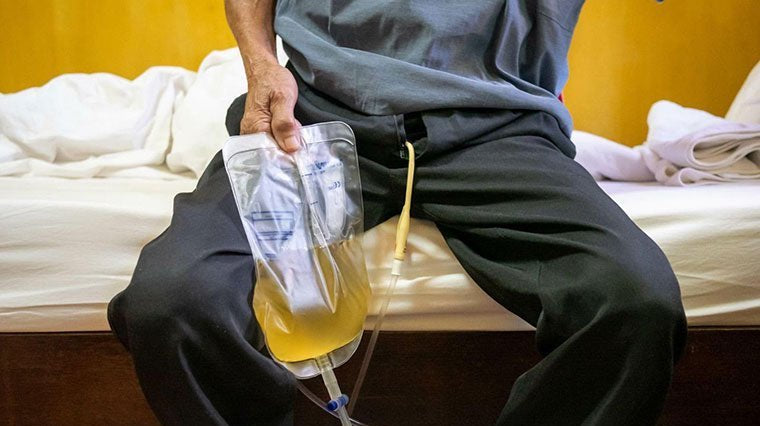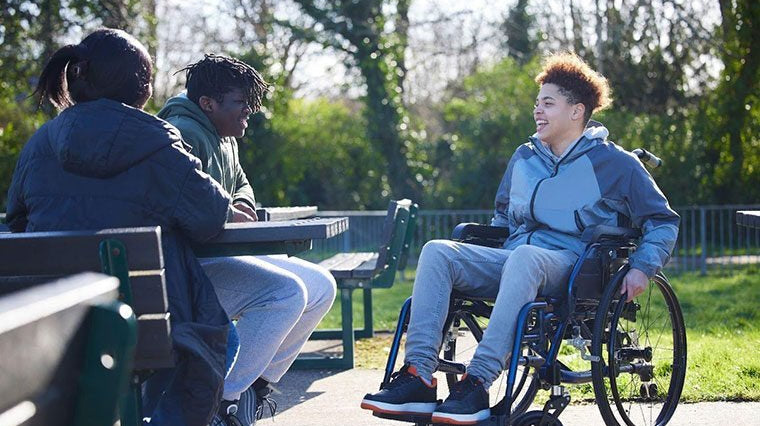News
High Rate Of Urinary Incontinence In Young People Receiving Home Care
Urinary incontinence (UI) is often seen as an issue that mainly affects older adults, but this isn’t the full picture. In fact, it’s a growing concern for younger men as well, with many under 50 experiencing UI. While childhood and older age are the two main peaks for UI, it’s increasingly being recognized in younger individuals, leading to the need for home care services. Studies show that this condition is more common than you might think, and it can be just as impactful on young men’s daily lives as it is on older adults.
Management of Post-Prostatectomy Urinary Incontinence Preferable to Surgery?
Prostate cancer is the most common cancer in elderly men, and radical prostatectomy is a widely used treatment for clinically localized prostate cancer. While many men experience temporary urinary function issues after surgery, most recover over one to two years. However, a significant number of patients face persistent urinary incontinence, severely impacting their quality of life. This ongoing condition leads to a range of challenges, including physical, emotional, social, and occupational difficulties, as well as significant hygiene concerns. Furthermore, urinary incontinence imposes substantial costs on both patients and healthcare systems.
Shower Transfer Benches for Elderly
Urinary incontinence (UI) affects up to 30% of older men, often as a result of conditions like overactive bladder, prostate enlargement, or neurological disorders. This not only disrupts daily routines but significantly complicates personal hygiene. Bathing becomes a particularly high-risk task for elderly males with UI due to mobility challenges, urgency to urinate, and slippery surfaces, all of which increase the likelihood of falls and injuries—the leading cause of ER visits among seniors.
Case Managers & Arranging Incontinence Products When Leaving Hospitals in the UK
Male urinary incontinence is a deeply personal health issue that can be amplified during or after a hospital stay. In the UK, the discharge process for such patients includes a robust support system coordinated by the National Health Service (NHS), aiming to ensure continuity of care. Unlike in the USA, where access to incontinence products can hinge on insurance coverage, the UK model is need-based and centrally managed. Still, awareness of how to navigate the system is essential for caregivers of male patients, particularly older adults, to secure necessary continence support after discharge.
Catheter-Associated Urinary Tract Infections & Sepsis
Catheter-associated urinary tract infections (CAUTIs) are among the most prevalent healthcare-associated infections, accounting for up to 40% of hospital-acquired infections.
Pressure Injuries & Condom Catheters
Urinary incontinence affects a significant percentage of men, particularly those with neurological disorders, mobility limitations, or post-surgical complications. It can lead to embarrassment, reduced quality of life, and challenges in maintaining hygiene. To manage urine leakage, some men turn to external devices like condom catheters, which fit over the penis and direct urine into a collection bag. Unlike indwelling catheters that are inserted into the bladder, condom catheters are considered less invasive and are often recommended for long-term use in bedridden or incontinent male patients.
Continence Care for Adolescents and Young Adults with Disabilities
Urinary incontinence (UI) is more common among adolescents and young adults than many people realize, especially for those with disabilities.
Comparing Healthcare Associated Infections Costs (HAIs). Why Is America So Expensive?
Healthcare-associated infections (HAIs), also known as hospital-acquired infections (HCAIs), are infections that develop during the course of medical treatment in hospitals or other healthcare settings.
Catheter-Related Urethral Injuries in Male Children
Urethral trauma in pediatric patients is a significant yet often overlooked concern in urological care. Although urethral injuries account for a small percentage of overall pediatric trauma cases, they can lead to long-term complications if not managed properly. Up to 25% of hospitalized patients undergo routine urethral catheterization, and while the incidence of iatrogenic urethral trauma is approximately 0.3%, its impact is substantial. Traumatic urethral catheterization can lead to acute complications such as urinary retention, bleeding, and urosepsis, as well as long-term risks like urethral stricture disease, requiring frequent dilation or reconstructive procedures.
Functional Disorders of the Lower Urinary Tract in Parkinson’s Disease: A Guide for Male Patients
Parkinson’s disease (PD) is an extrapyramidal neurological disorder primarily recognized for its motor symptoms, such as tremors, rigidity, and bradykinesia. However, non-motor symptoms, including lower urinary tract dysfunction, are increasingly acknowledged as significant contributors to reduced quality of life. Research indicates that 57–83% of PD patients experience urinary storage symptoms, while voiding dysfunction affects 17–27% of individuals. Among these, nocturia is the most prevalent, impacting over 60% of patients, followed by urgency (33–54%) and frequency (16–36%).
Penile Pressure Ulcers Secondary to Condom and Indwelling Catheters and Prone Positioning
Penile pressure ulcers are painful sores that develop on the penis due to prolonged pressure on the skin and underlying tissues. These ulcers can occur when there is continuous pressure without relief, leading to poor blood circulation and tissue damage. Male patients with spinal cord disorders (SCD) are at a higher risk because they may have limited mobility, leading to unrelieved pressure on sensitive areas.
Buyer's Guide to Standing Patient Lifts / Hoyer Lifts – USA
Standing patient lifts, commonly referred to as Hoyer lifts, are essential mechanical devices designed to assist individuals with limited mobility in safely transitioning between positions, such as from a bed to a chair or from a toilet to a wheelchair. These lifts play a critical role in reducing strain on caregivers while ensuring patient safety and comfort.












